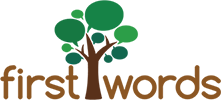Every child develops language at their own rate. The pattern they follow progresses gradually, eventually, using words and stringing them together to form sentences.
 Communication is more than just the number of words a child can say. It also refers to pragmatic language, which is the child’s ability to use language in a social manner, receptive language, which is how the child understands words and sentences, and expressive language, which is the spoken words and sentences.
Communication is more than just the number of words a child can say. It also refers to pragmatic language, which is the child’s ability to use language in a social manner, receptive language, which is how the child understands words and sentences, and expressive language, which is the spoken words and sentences.
Though every child develop language and communication at their own rate, the American Speech Language Hearing Association has a milestone chart to understand how many words a child should be saying at a particular age.
Speech therapy is used to improve overall communication with techniques and activities that address disorders and delays in articulation, expressive/receptive language, apraxia of speech, oral motor dysfunction, cognitive skills, and social language. At First Words Speech Therapy we work closely with children of all ages, assess their ability to speak and understand, then create an individualized plan based on their needs. Check back with us next week for more milestones from ASHA.
Birth to 3 Months
During the newborn period, your baby will begin to respond to familiar voices and attempt communication through coos, cries, and facial expressions. Here is what to expect.
Receptive Language (Understanding)
Startles at loud sounds
Quiets or smiles when hearing caregiver’s voice
Expressive Language (Talking)
Makes cooing sounds
Smiles at people
Cries differently for each need
Startles at loud sounds
Quiets or smiles when hearing caregiver’s voice
4 to 6 Months
Your baby will become more responsive to tone and sound and will begin to babble during this period.
Receptive Language (Understanding)
Responds to changes in tone of voice
Pays attention to music
Moves eyes in the direction of sounds
Expressive Language (Talking)
Makes speech-like babbling sounds, like pa, ba, and mi
Giggles and laughs.
Coos and babbles when playing alone or with caregiver
Makes sounds when happy or upset
7 to 12 Months
As they approach their first birthday, your baby will likely respond to their name and commonly used words and string together more sounds, perhaps into first words.
Receptive Language (Understanding)
Looks when someone points
Turns when you call child’s name
Understands words for common items and people (e.g., cup, truck, juice, daddy)
Starts to respond to simple words and phrases, like “No,” “Come here,” and “Want more?”
Plays simple games, like peek-a-boo
Expressive Language (Talking)
Babbles longer strings of sounds (e.g., babababa)
Uses sounds and gestures to get and keep attention.
Uses gestures like waving bye, reaching for “up,” and shaking head no.
Points to objects and shows them to others.
Imitates different speech sounds.
Says 1 or 2 words (e.g., hi, dog, dada, mama, uh-oh)
1 to 2 Years
During their second year, children understand simple directions and questions and begin to use more words.
Receptive Language (Understanding)
Points to a few body parts when asked
Follows 1-step directions (e.g., “Roll the ball”)
Responds to simple questions (e.g., “Who’s that?” or “Where’s your hat?”)
Listens to simple stories, songs, and rhymes.
Points to pictures in a book when named
Expressive Language (Talking)
Uses new words regularly
Uses speech sounds p, b, m, h, and w in words
Starts to name pictures in books
Asks simple questions (e.g., “what’s that?”, “who’s that?”, “where’s doggy?”)
Combines 2 words (e.g., “more apple,” “no bed,” “mommy book”)
2 to 3 Years
Approaching age 3, children will understand concepts like opposites and slightly more complex directions, and can express themselves for most needs.
Receptive Language (Understanding)
Understands opposites, like go/stop, big–little, and up/down
Follows 2-step directions (e.g., “get the spoon and put it on the table”)
Understands new words quickly
Expressive Language (Talking)
Has a word for almost everything
Talks about things that are not in the room
Uses speech sounds k, g, f, t, d, and n in words
Uses words like in, on, and under
Uses two- or three- words to talk about and ask for things (e.g., “give me water”)
Is understand by familiar people
Asks “Why?”
Puts 3 words together to talk about things. May repeat some words and sounds


